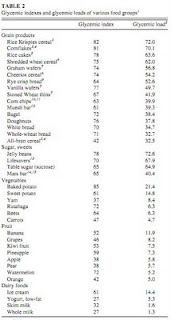 |
| Dr. Lindeberg weighing a Kitavan man. |
While training in family medicine,
Staffan Lindeberg, M.D., Ph.D., read a
paper (published in 1985) in the
New England Journal of Medicine that would alter the course of his future research. It was entitled "Paleolithic Nutrition" and one of the authors was Boyd Eaton, M.D.
It was about the same time Dr. Lindeberg had heard from a neighbor that humans had the guts of vegetarian -- to which he responded, "Oh yeah?" His neighbor was influenced by one of a number of nutrition "stories," as Dr. Lindberg calls them, and not based on actual scientific investigation.
"People like John Harvey Kellog [inventor of corn flakes and strong proponent of a vegetarian diet] has had more influence on thinking about a healthy diet than Darwin has," Dr. Lindeberg says.
So began his journey to discover more about evolutionary biology's connections to human health, diet and Western-style chronic diseases. Twenty-six years later, last weekend on Aug. 5 in Los Angeles, Dr. Lindeberg presented alongside Dr. Eaton and several other proponents of a "Paleo-style diet".
However, unlike most of the other presenters, Dr. Lindeberg clarified he doesn't necessarily recommend a diet containing high amounts of meat (rich in protein and fat) along with little to no carbohydrates. Instead, he said that based on his research he's convinced that the main difference from a Western-style, modern diet and that which hunter-gatherers eat is the concentration of bioactives. These bioactives, he explains, must be the real basis by which ancient diets protect from disease.
The alternative hypothesis of several researchers is that the chronic habit of postprandial (after meal) increase in glucose leads to Western disease. It's not proven, Dr. Lindeberg says, and because so current nutritional advice rests mainly on epidemiological studies.
"It's difficult to make clinical trials, to have two groups eat what they think is the same type of hamburger. One group eats hamburger with real meat, one group eats placebo meat. Of course it's impossible to do it. Maybe some time in the future," Dr. Lindeberg said.
So, lacking randomized clinical trials, it's important to begin thinking evolutionarily. That's not to say that whatever is natural is good for you. This is "nature romanticism," Dr. Lindeberg warns. For example, it is wrong to think that soy formula because it is "natural" is as healthy as breast milk. After all, a lot of these plants evolve their own defense system deliberately to target we herbivores.
Closely attached to developing a hypothesis based on evolutionary terms, is observations from hunter-gatherers. When Dr. Lindeberg studied the Kitava of New Guinea, in 1990, they chose that particular population because they had enough ethnic people and large enough population to obtain data.
Unlike other hunter-gatherers like the Inuit of Greenland that eat a low-carb diet or the Ache of Paraguay, the Kitavans are more easily described as "primitive horticulturalists." They eat plenty of yams, sweet potatoes, fruits, and coconut. They eat pork meat only on occasion. Yet, despite their diet, as a population they enjoy relatively little incidence of myocardial infarctions, stroke, and atherosclerosis.
Dr. Lindeberg dismissed criticism that he may have made a mistake in his observations and that the Kitavans were eating more pork than reported in his data. "These people are in love with the low-carb hypothesis," he said.
His findings are consistent with those from East Africa in 1920s, where stroke was absent among the population, but then it became the most common neurological disease. History repeated itself in Papua New Guinea.
Any traditional population that migrates to a Westernized diet develops high incidence of hypertension and stroke including those where the so-called Mediterranean diet is widely eaten have a high incidence of stroke. So, in comparison to a the paleo concept, it's logical to accept it as a better diet. However, Dr. Lindeberg says, our "logic is not working."
 |
| Kitavan girl |
But, what it is it about the diets of the developed world that contribute to disease? Is it carbs? No, because Kitavans can live to a ripe old age -- even some reaching centenarian status -- lacking any Western diseases while on a high-carb diet. Is it exercise? No, Kitavans are active but not anymore than an average construction worker in Sweden, Dr. Lindeberg said.
"I don't think you need to eat a low-fat diet. I think you need to stay away from Western food."
Again, Dr. Lindeberg stresses the need to stop talking about calories, carbs, and fats as "big villans" and begin focusing on bioactives. Initial controlled trials he has led that investigate the effects on a "paleo diet" rich in lean meats, fruits and vegetables have led to intriguing results.
"We've found with early diabetes or impaired glucose intolerance (pre-diabetes) all of them reverted to improved glucose tolerance," he said.
There are other benefits from eating similar to the way our hunter-gatherer ancestors did. He notes that by eating only paleo food, most people find they automatically achieve calorie restriction. Eating less is also better for the planet.
And paleo is not too far off from conventional nutritional advice. If you look at a DASH (Dietary Approaches to Stopping Hypertension) eating plan -- which is rich in lean meats, low-fat dairy products, whole grains, and fruits and vegetables -- Lindeberg says, "it's more or less paleo." (I was glad to hear that since I've been recommending the DASH eating plan for years to everybody.)
Dr. Lindeberg clarifies that what he thinks the problems lie is in focusing on fats, carbohydrates and calories instead of food choices.
"I think
nutritionism [a term coined by Gyorgy Scrinis and popularized by author Michael Pollan] has been too much on the agenda," Dr. Lindeberg said.
To read more about Staffan Lindeberg and for photo credits, see http://www.staffanlindeberg.com/KitavaPhotos.html



















